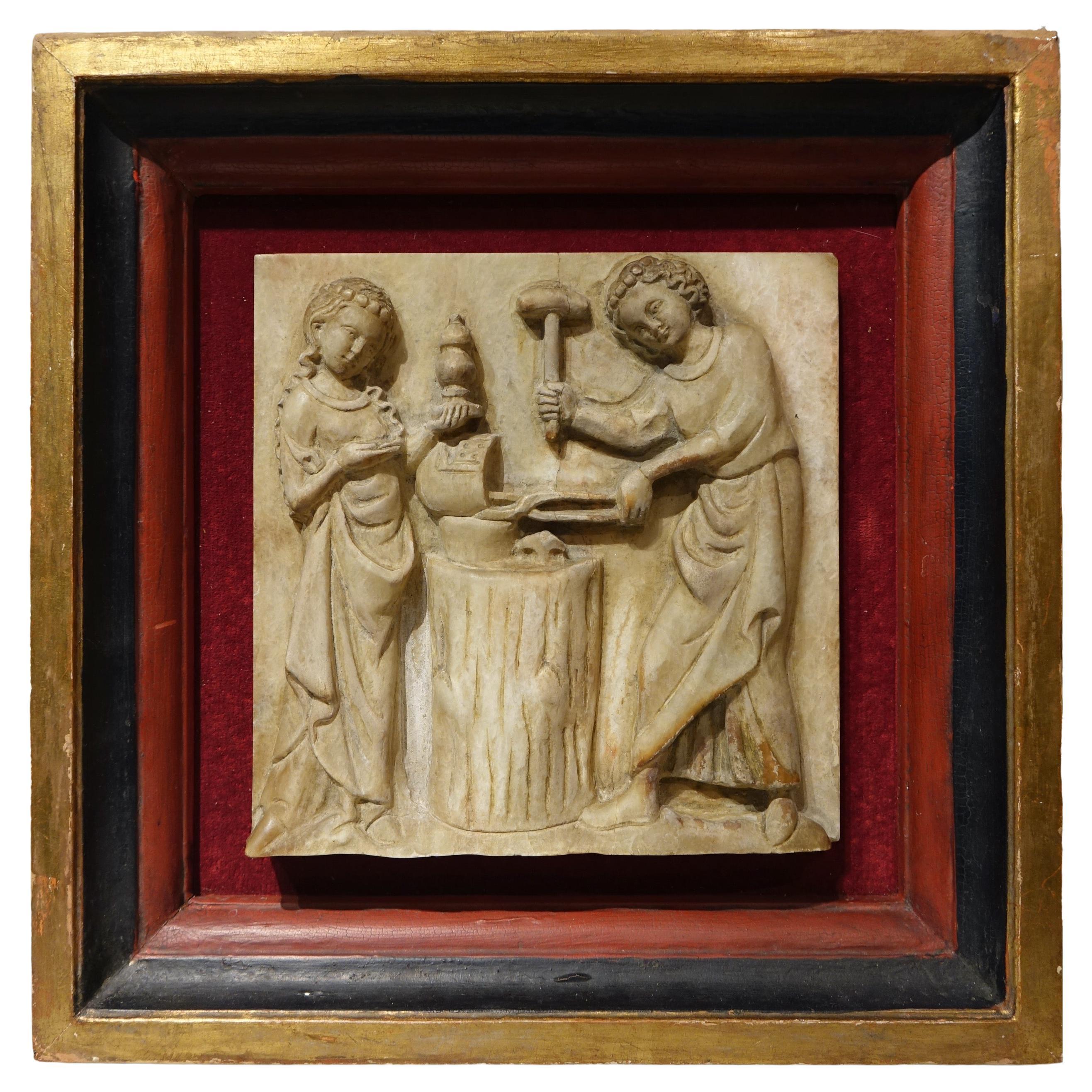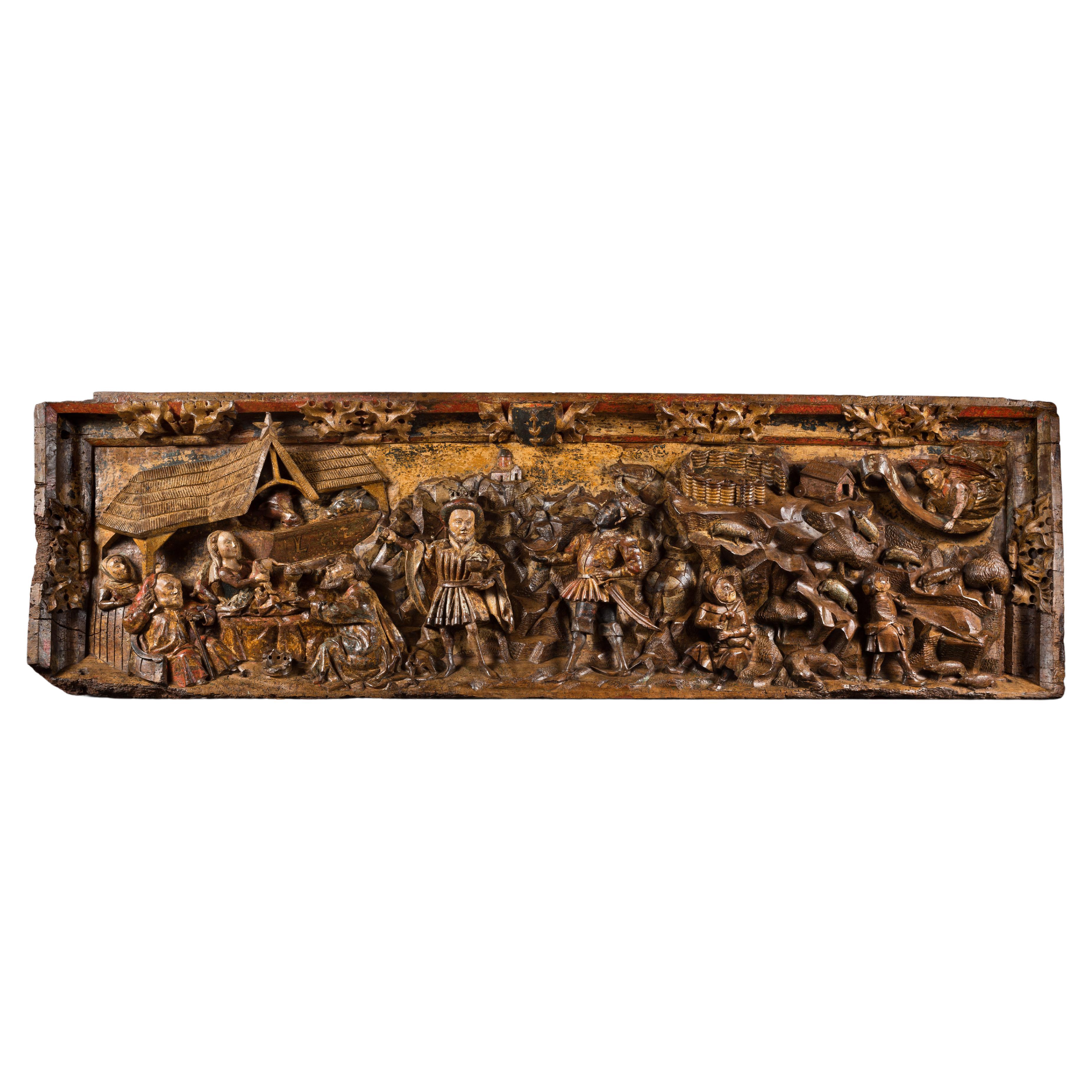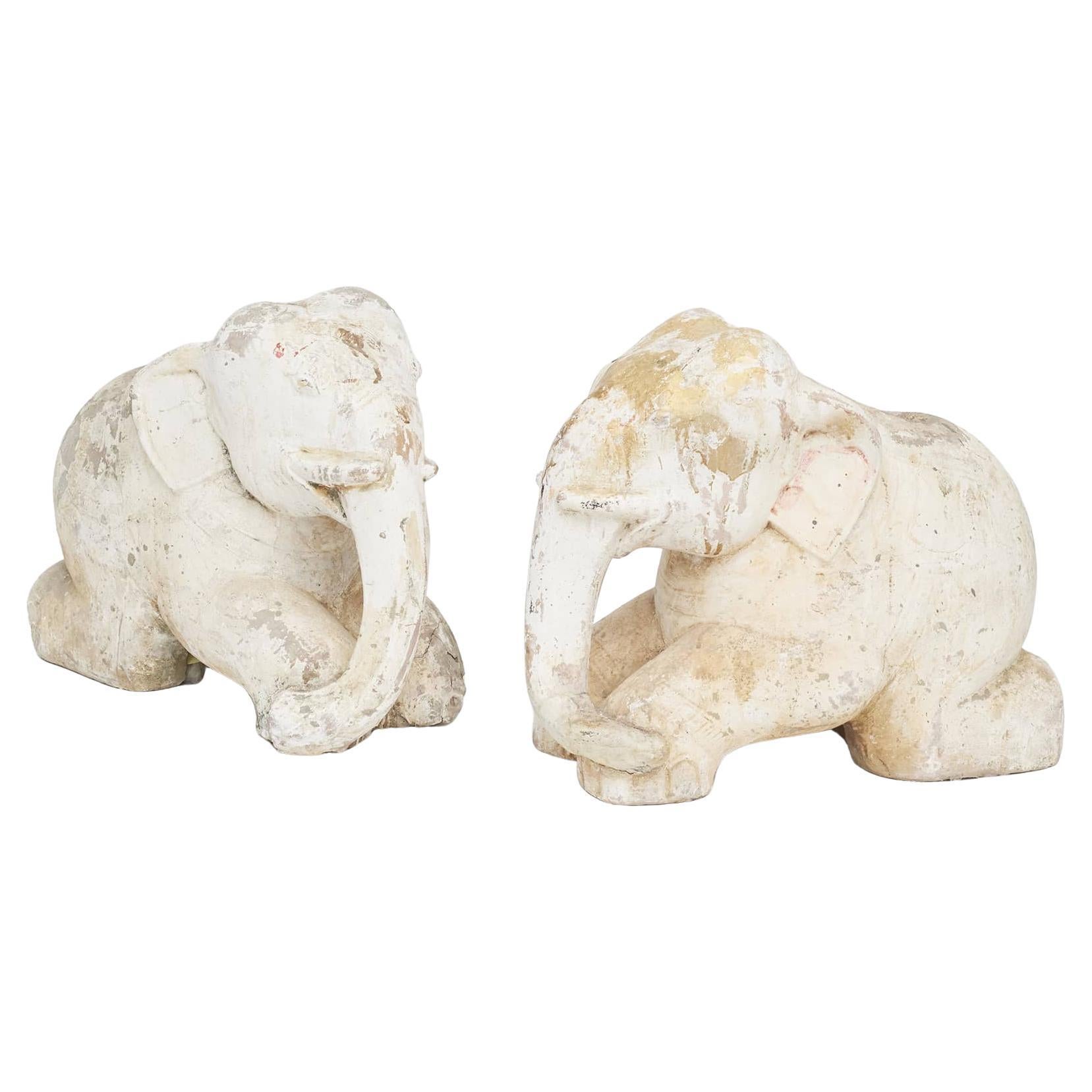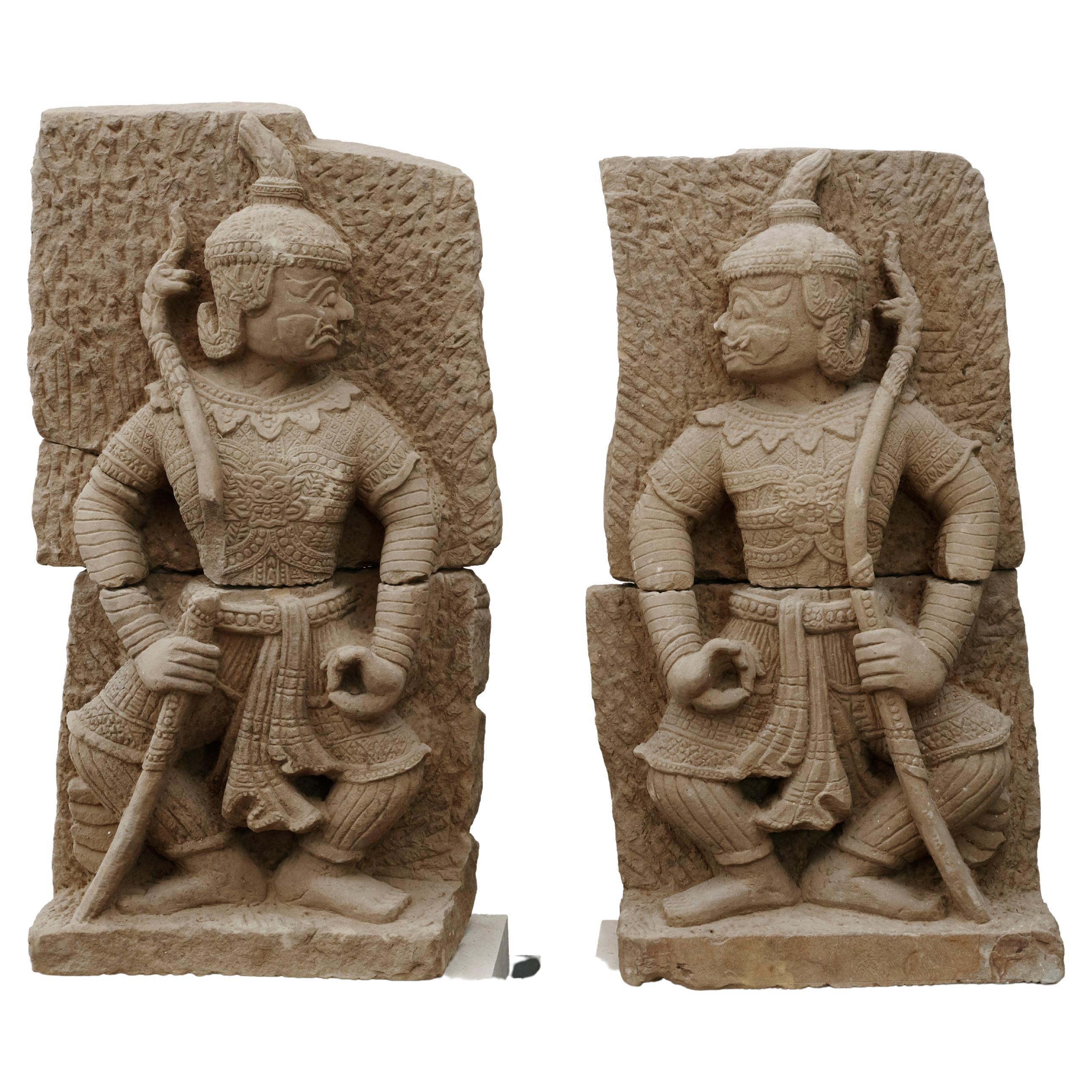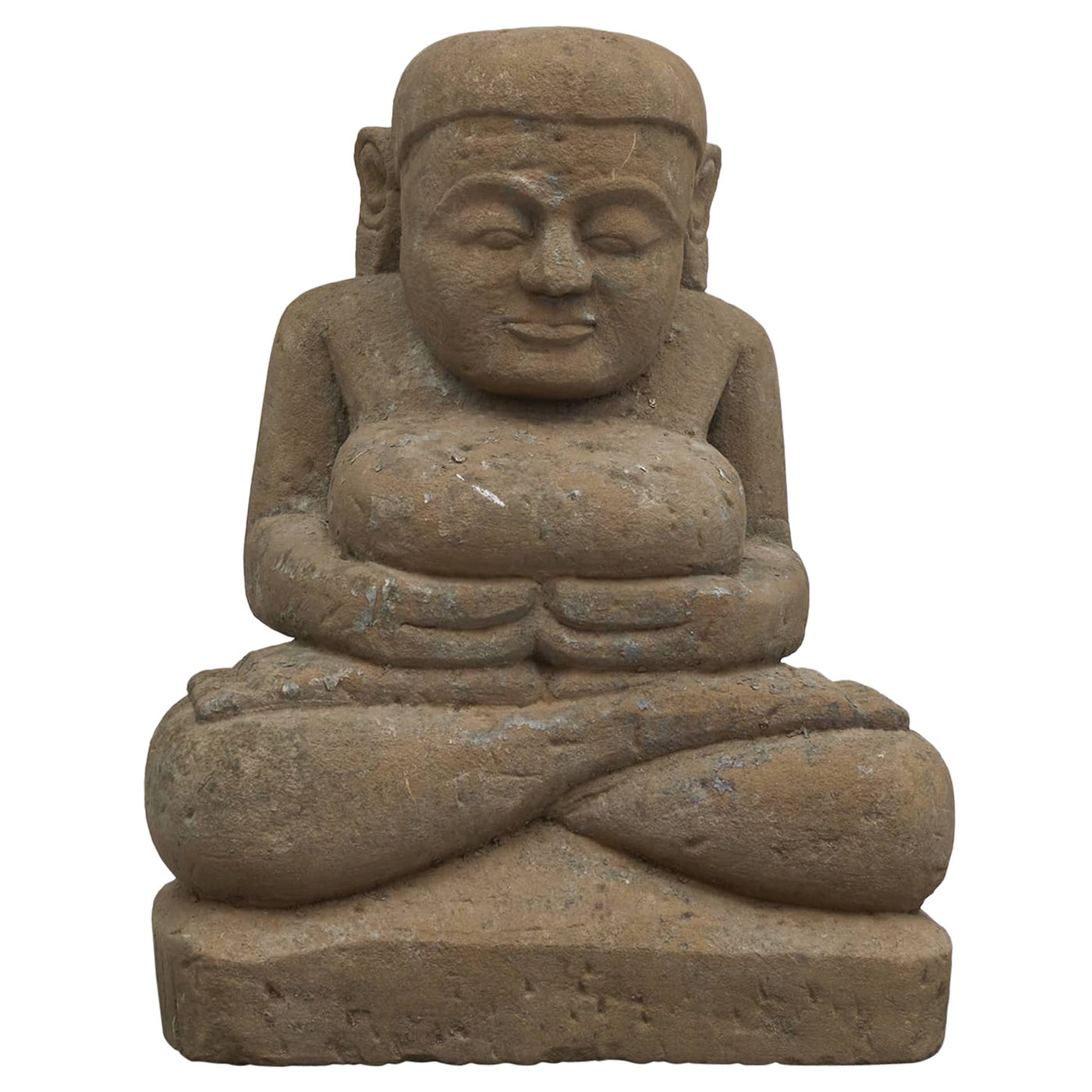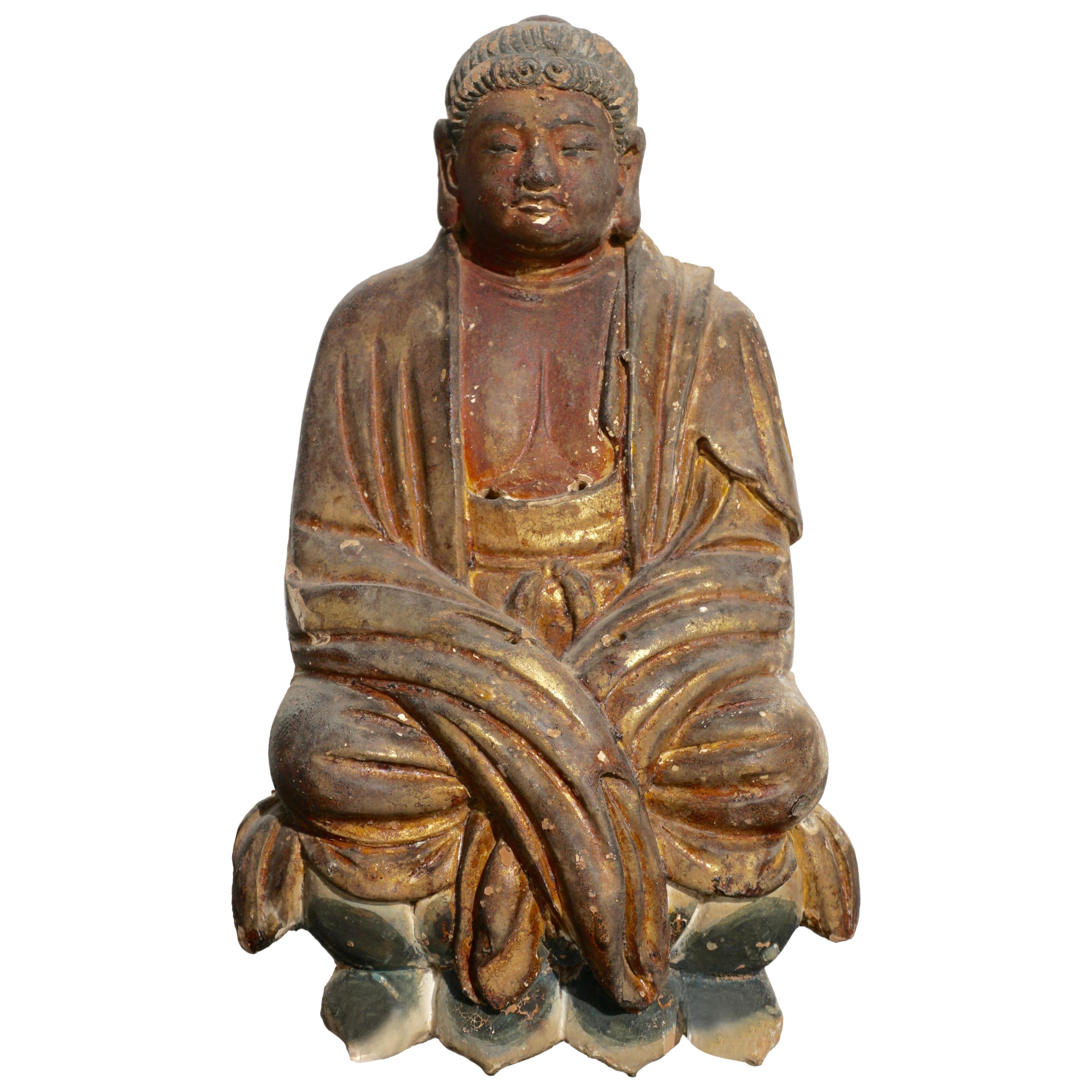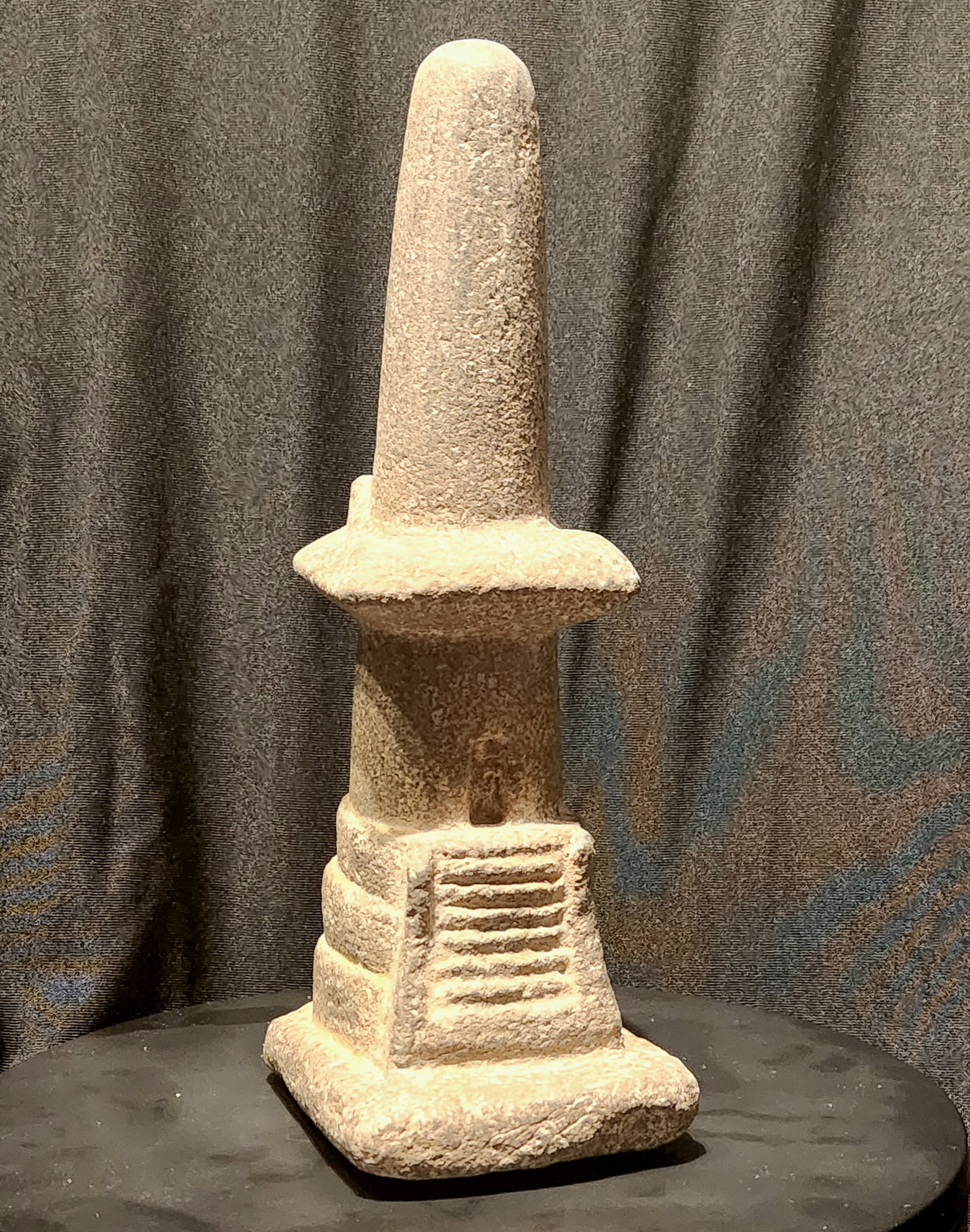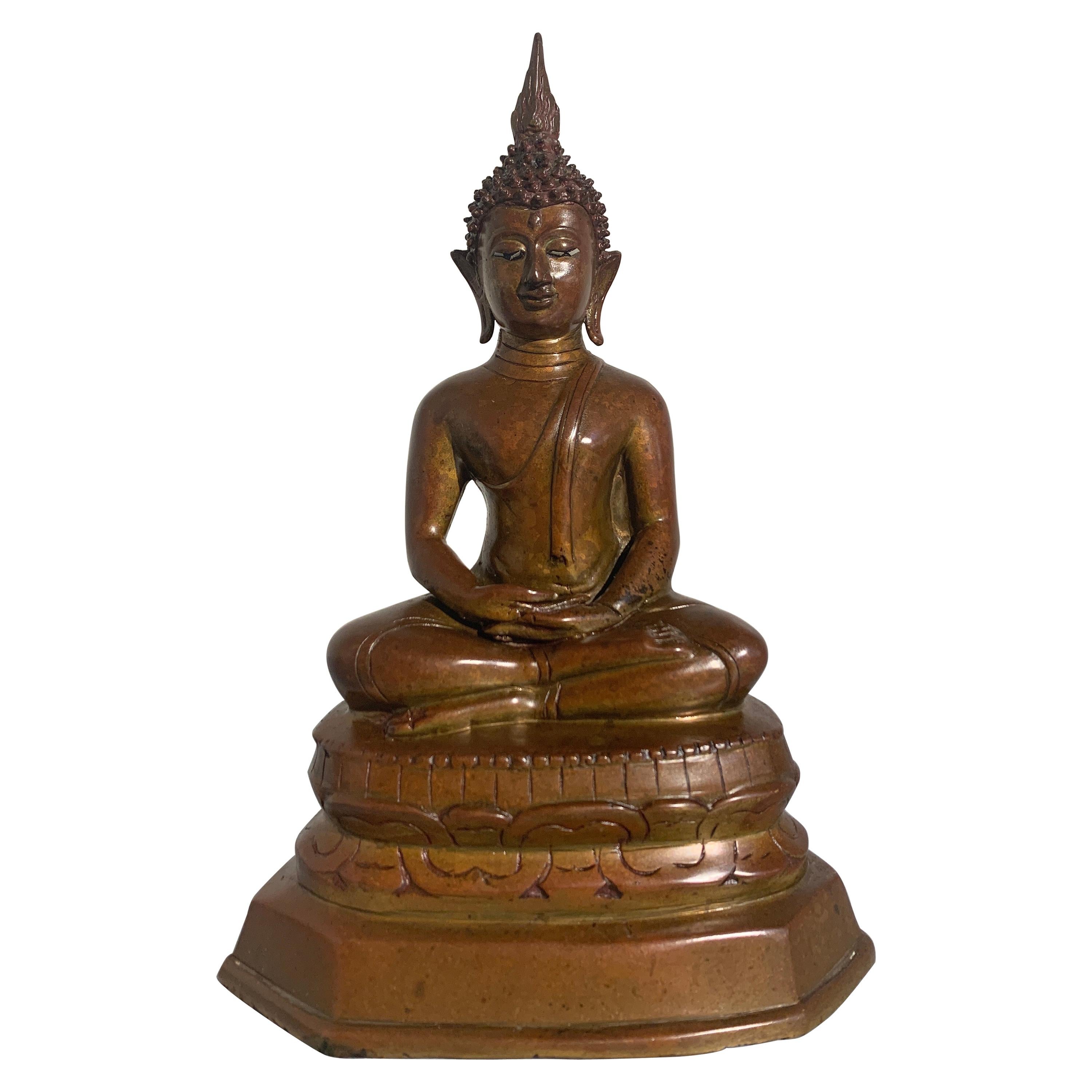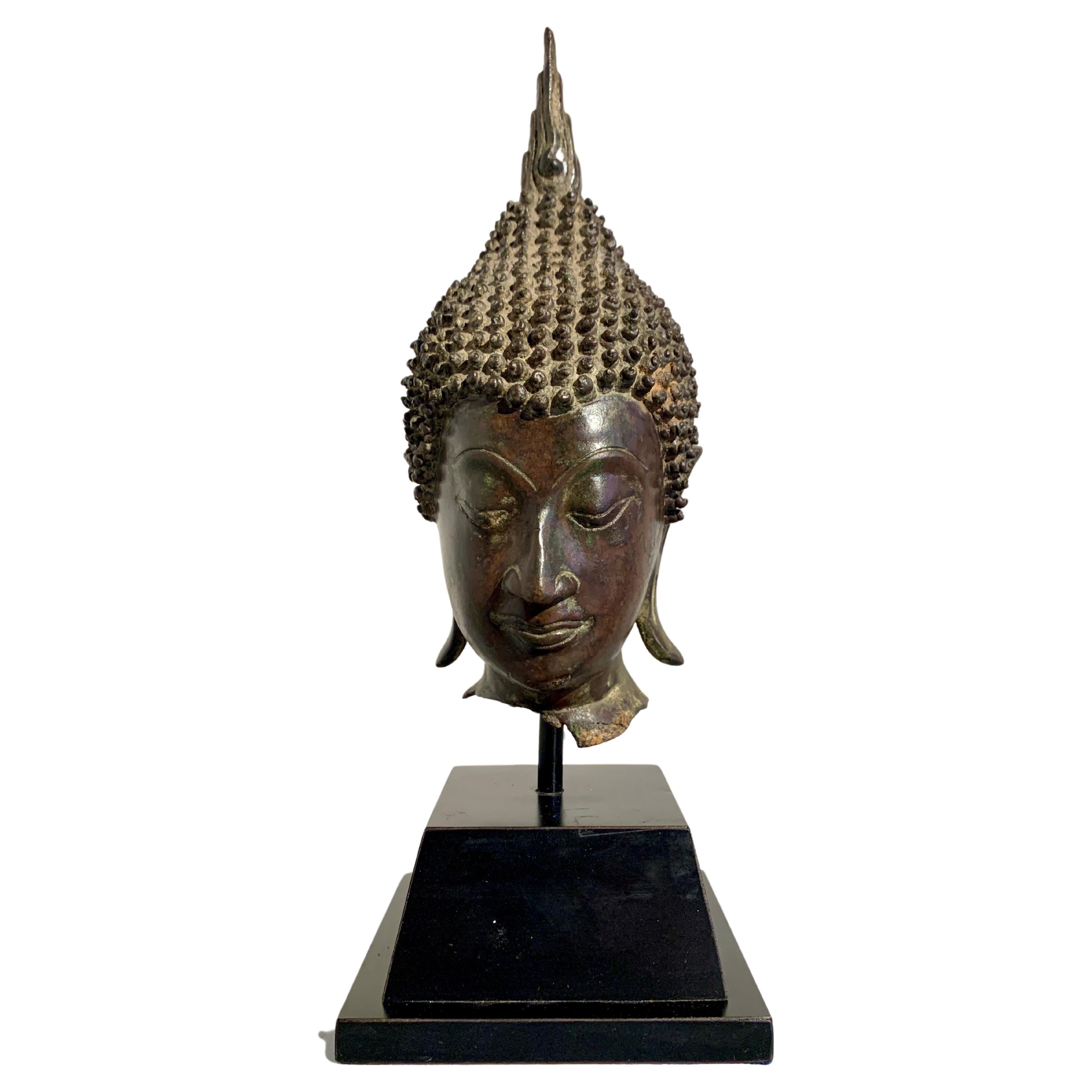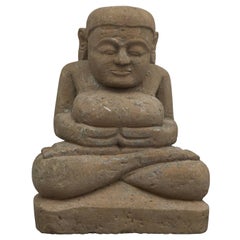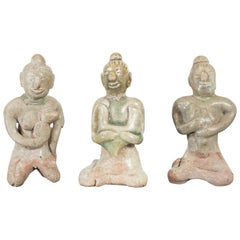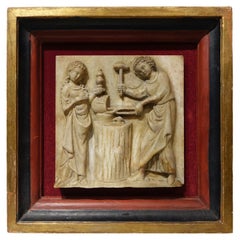
14th-15th Century Sandstone Temple Relief of Buddha on a Throne in a Boat
View Similar Items
Want more images or videos?
Request additional images or videos from the seller
1 of 12
14th-15th Century Sandstone Temple Relief of Buddha on a Throne in a Boat
About the Item
- Dimensions:Height: 20.87 in (53 cm)Width: 22.45 in (57 cm)Depth: 10.24 in (26 cm)
- Style:Other (Of the Period)
- Materials and Techniques:
- Place of Origin:
- Period:
- Date of Manufacture:14th-15th Century
- Condition:Wear consistent with age and use.
- Seller Location:Kastrup, DK
- Reference Number:Seller: 1041831stDibs: LU1007422206972
About the Seller
5.0
Platinum Seller
These expertly vetted sellers are 1stDibs' most experienced sellers and are rated highest by our customers.
Established in 1974
1stDibs seller since 2013
403 sales on 1stDibs
More From This SellerView All
- Pair of Sandstone Temple GuardsLocated in Kastrup, DKA rare pair of carved sandstone Burmese temple guards. Originates from paragode in Burma c. 15-17th century. Handcarved with fine details. Each guard ...Category
Antique 16th Century Burmese Other Statues
MaterialsSandstone
$15,046 / set - 17-18th Century Burmese Sandstone Buddha Seated in MeditationLocated in Kastrup, DKBurmese carved sandstone Buddha sculpture. Seated in dhyanasana with legs in virasana, the half lotus position, hands in dhyana mudra, the gesture of meditation. Originates from ...Category
Antique 17th Century Burmese Other Figurative Sculptures
MaterialsSandstone
- Pair of 18th Century Temple Elephants Carved in Sandstone from BurmaLocated in Kastrup, DKPair of rare 18th century temple elephants carved in sandstone with chalk and leftovers of gold leaf. Chalking is used as a surface to bind gold leaf. Originally fully covered with g...Category
Antique 18th Century Burmese Other Animal Sculptures
MaterialsSandstone
- Dragon "Mythical Beast" Sandstone ReliefLocated in Kastrup, DK400 - 600 Year old charming and artistic sandstone relief. Dragon "mythical beast" which is a symbol of wisdom. From Buddha temple in Arakan, Burma....Category
Antique 16th Century Burmese Other Sculptures and Carvings
MaterialsSandstone
- 15-16th Century Sandstone Sculpture of the the Great RenunciationLocated in Kastrup, DK15-16th century sandstone sculpture depicting Prince Siddhartha's (Buddha) horse, 'Kanthaka', during The Great Renunciation. Indra leads the horse, four yakshas bear his feet, Channa...Category
Antique 16th Century Burmese Other Figurative Sculptures
MaterialsSandstone
- 15-16th Century Sandstone Standing Buddha SculptureLocated in Kastrup, DK400-500 years old hand carved sandstone sculpture of a standning Buddha flanked by a munk and a mythical animal. Originates from pagoda / temple in Ara...Category
Antique 16th Century Burmese Other Sculptures and Carvings
MaterialsSandstone
You May Also Like
- Set of Three 14th or 15th Century Ceramic Fertility Figures from ThailandLocated in Yonkers, NYA set of three Thai ceramic fertility figures from the 14th or 15th century. Created in Thailand during the 14th or 15th century, this set of petite ...Category
Antique 15th Century and Earlier Thai Sculptures and Carvings
MaterialsCeramic
- Alabaster high relief, Spain 14th centuryLocated in PARIS, FRAlabaster plate in high relief illustrating a forgeron working on a metal object (a helmet?). A young woman is in front of him holding in her left hand an ovoid vase or reliquary tha...Category
Antique 15th Century and Earlier Spanish Medieval Figurative Sculptures
MaterialsAlabaster
- 15th Century Burgundian Low-Relief Depicting Scenes of the NativityLocated in Saint-Ouen, FRProvenance : In the same private collection for several generations, Burgundy. The canonical Gospels describe briefly the episode of the Nativity. It comprises three parts : • The Preludes : the Journey to Bethlehem, the Census • The Nativity • The Announce to the Shepherds and the Adoration of the Magi Only the Gospel according to Matthew (2, 1-12) speaks about the Adoration of the Magi. Staying vague about their number it does say they brought the newborn gold, incense and myrrh. The apocryphals, the fathers of the Church and many other authors have filled in the gaps of the evangelic tale. The sobriety and symbolic of the story have been a huge inspiration to artists. Although one of the oldest depictions of the Adoration of the Magi dates from the 2nd century the theme became very popular in Christian art during the late 14th century. One of the reasons explaining this success is that it celebrates both the Virgin and Christ at the same time. This important walnut panel is carved in a strong relief and depicts the different steps of the story of Jesus’ birth. On the left, the donkey and ox that have accompanied Mary and Joseph from Bethlehem are depicted behind a trough. On the thatch roof appears the star that would guide the magi to the place of birth of Jesus. Mary is wearing a veil and is seating on a bed. She holds her baby at arm’s length to present him to the magi. Saint Joseph is by her side. The old man is holding a cane in his left hand while from the right hand he seems to uncover himself to greet the visitors. A woman assists to the scene. In front of the holy family the three magi stand behind one another to pay their homage to the newborn. The first magi has a pointed beard. He is already kneeling out of deference and has placed his crown to his feet. He gives the baby a hanap filled with gold coins. This is Melchior as the legend describes him with white hair and a long beard. Caspar, the second magi bears a cup of incense. He is looking at the third magi and with his right hand he points to the star that has guided them there. He has a short beard and wears crakow shoes, breeches and a wide sleeved doublet. Finally Balthazar, the elegant last magi proceeds proudly towards the holy family with his one hand on the saber’s hilt and the other holding a cup. He brings the divine child the myrrh. He probably just dismounted as the horse can be seen behind him. The scene is set in a very detailed and narrative decor. In the right part of the panel the shepherd receive the announce of Jesus’ birth. An angel comes down from heaven with a scroll bearing the good news in his hands. The herding dog sleeps peacefully while sheeps graze. At the top of the cliff we notice the gilded sheeps enclosure. The panel’s moulded frame is carved with a foliated decor. In it’s centre appears a coat-of-arms. It is the alliance of the three magi’s arms. Indeed as it was common for legendary figures the three of them received imaginaries coat-of-arms. Thus, on a field of azure stands a star for Melchior, a crescent for Caspar and a pennon for Balthazar. This high-relief panel is undeniably the work of a very skilled and imaginative artist. This key moment in the New Testament is transposed to a contemporary environment thanks to the figures’ clothing and the rural daily life scene. This way the universal dimension of the episode is highlighted allowing a better understanding for the contemporaries. The sculptor has represented the episodes of the Adoration of the Magi and the Announce to the Shepherd with great talent and numerous details giving life to a picturesque and narrative scene. The important traces of polychromy give those already very animated scenes a stronger pictorial power and a rich dynamism. Because of the picturesque and familiar realism so dear to the artists of the late Medieval era, of the didactic function of this type of panel as well as the quality of the sculpture this piece is an astounding example of Burgundian art of the 15th century. Literature Louis Réau, Iconographie de l’Art chrétien...Category
Antique 15th Century and Earlier French Gothic Figurative Sculptures
MaterialsWalnut
- Ayutthaya Lacquered And Gilt Bronze Buddha Head 15th CenturyLocated in Dallas, TXAyutthaya Lacquered and Gilt Copper Bronze Buddha Head Circa 15th Century A beautifully lacquered and gilt bronze Buddha head from the Kingdom of Ayutthaya, Thailand, circa 15th ...Category
Antique 15th Century and Earlier Thai Ming Figurative Sculptures
MaterialsBronze
- Early Ming Dynasty Chinese Buddha Statue, circa 14th CenturyLocated in Dallas, TXA very fine late Yuan to early Ming Chinese terracotta gilt and polychrome painted Buddha figure, he is dressed in thick robes, his hair arranged in ty...Category
Antique 15th Century and Earlier Chinese Ming Figurative Sculptures
MaterialsTerracotta
- Rare Aztec 15th/16th Century Temple/Observatory Model w/ 1970 ProvenanceBy Aztec ServicesLocated in Culver City, CAAn extremely rare Basalt model of a temple in the Aztec capital of Tenochtitlan, perhaps one that was next to the Templo Mayor itself, The Great Temp...Category
Antique 15th Century and Earlier Mexican Pre-Columbian Figurative Sculpt...
MaterialsStone
$8,400 Sale Price32% Off
Recently Viewed
View AllMore Ways To Browse
Buddha Monk
Buddha Throne
Pagoda Buddha
Buddha Sandstone
Sandstone Buddha
Sail Boat Sculpture
Antique Natural Sandstone
Sandstone Burma
Monster Furniture
Art Deco Wien
Antique Prestige
Tree Stump Furniture
Antique Bronze Female Figure
Relief Marble Bronze
French Helmet
Man Woman Bronze
Deco French Statue
Large Sculpture Neoclassical

